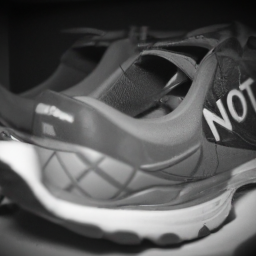Are you looking to lace up your running shoes and hit the pavement? Whether you’re a complete newbie or just getting back into the groove, this article is here to guide you on your running journey. From setting realistic goals to finding the perfect pair of shoes, we’ve compiled a list of 10 essential tips to help beginners kickstart their running routine. So, get ready to boost your endurance, embrace the runner’s high, and become a confident runner in no time!
Table of Contents
ToggleFinding the Right Shoes
Finding the right shoes is essential for any runner, especially for beginners. Your shoes are your most important piece of equipment, as they provide support, cushioning, and protect your feet from impact. When starting your running journey, it is crucial to invest in a good pair of running shoes that match your foot type and running style.
To find the right shoes, start by visiting a specialty running store where the staff can analyze your gait and recommend the best shoe for you. They will consider factors such as arch height, pronation, and overall foot shape. Trying on different pairs and taking them for a test run around the store will give you a better feel for their fit and comfort. Remember, your feet will thank you for choosing the perfect pair of shoes!
Start Slow and Gradually Increase
As a new runner, it’s important to start slow and gradually increase your mileage and intensity. Going too hard or too far too soon can lead to injuries and burnout, which can quickly dampen your enthusiasm. Begin with a mix of walking and jogging, gradually increasing the amount of time you spend running each week.
A popular method for beginners is the run/walk technique. Start with a ratio of one minute of running followed by two minutes of walking. As you become more comfortable, slowly increase the running time while reducing the walking intervals. This method allows your body to adapt and build endurance gradually, reducing the risk of injury and allowing you to progress at a pace that suits you.
Warm Up and Cool Down
Before you hit the pavement, it’s crucial to warm up your body to prepare for the physical demands of running. A proper warm-up routine should consist of dynamic stretches and exercises that target major muscle groups. This helps increase blood flow, improve flexibility, and prepare your body for the upcoming activity.
After your run, take the time to cool down and stretch your muscles. This helps prevent stiffness and reduces post-run muscle soreness. Incorporating static stretches, such as hamstring stretches and calf stretches, into your cool-down routine can help improve your flexibility and reduce the chance of injury.
Proper Running Form
Maintaining proper running form is essential for efficient and injury-free running. Keep your head up, looking forward, with your shoulders relaxed and your arms swinging naturally at your sides. Focus on landing midfoot, avoiding heel-striking, as it can increase the impact on your joints.
Keep a slight forward lean from your ankles, engaging your core muscles for stability. Strive for a smooth and flowing stride, landing lightly and pushing off with each step. Maintaining good posture and form throughout your run will help conserve energy and reduce the risk of injury.
Listen to Your Body
One of the most important lessons for beginner runners is to listen to your body. Pay attention to any pain, discomfort, or fatigue that arises during or after your run. It is normal to experience some muscle soreness, but sharp or prolonged pain could indicate an injury.
If you experience pain, modify your running routine, take rest days, or seek professional advice if necessary. Ignoring your body’s signals can lead to further injury and setbacks. Remember, it’s better to rest and recover than to push through pain and risk long-term consequences.
Appropriate Clothing
Choosing the appropriate clothing for your runs is not just about looking stylish, but also about comfort and functionality. Opt for moisture-wicking fabrics that help keep you dry and prevent chafing during sweaty workouts. Dress in layers, especially in cooler temperatures, so you can adjust according to your body’s heat production.
Invest in a good pair of running socks that provide cushioning and reduce the risk of blisters. Additionally, don’t forget to prioritize safety by wearing reflective gear when running in low-light conditions. Dressing appropriately for your runs will enhance your comfort and overall running experience.
Fueling Your Run
Proper nutrition and hydration are key to fueling your runs and aiding in recovery. Ensure you’re adequately hydrated before hitting the road, especially during longer or more intense runs. Drink water throughout the day, and consider having a pre-run snack to provide energy.
During longer runs, consider bringing along a water bottle or utilizing water stations along your route. Experiment with different fueling options, such as energy gels or sports drinks, to find what works best for you. After your run, replenish your body with a mix of carbohydrates and protein to aid in muscle repair and recovery.
Set Realistic Goals
As a beginner runner, it’s important to set realistic goals to keep yourself motivated and on track. Start by setting short-term goals that are achievable within a few weeks or months. These could be running a specific distance, increasing your running time, or participating in a local 5K race.
As you achieve your short-term goals, you can gradually work towards longer-term goals, such as completing a half marathon or even a full marathon. Remember, progress takes time, so be patient with yourself and celebrate each milestone along the way.
Join a Running Group or Club
Running with others can be incredibly motivating and enjoyable, especially for beginners. Consider joining a local running group or club to connect with like-minded individuals and gain support from experienced runners. Running alongside others can provide accountability, guidance, and the opportunity to learn from those with more experience.
Running groups often organize social runs, training sessions, and even races together. It’s a great way to expand your social circle while sharing the joys and challenges of running with others. Plus, it’s always more fun to have someone by your side to cheer you on during your runs!
Stay Consistent
Consistency is key when it comes to building endurance and making progress as a runner. Strive to maintain a regular running schedule, aiming for at least three to four runs per week. While life can sometimes get in the way, try to make running a priority and schedule it into your weekly routine.
Even on days when your motivation is lacking, reminding yourself of how good you will feel after your run can provide the necessary push to lace up your shoes. Remember, staying consistent with your running routine will help you establish healthy habits and continue making progress towards your goals.
Running for beginners should be an exciting and rewarding experience. By following these tips, you’ll set yourself up for a successful and enjoyable journey. Remember to listen to your body, be patient with yourself, and most importantly, have fun while you’re out there pounding the pavement. Happy running!








